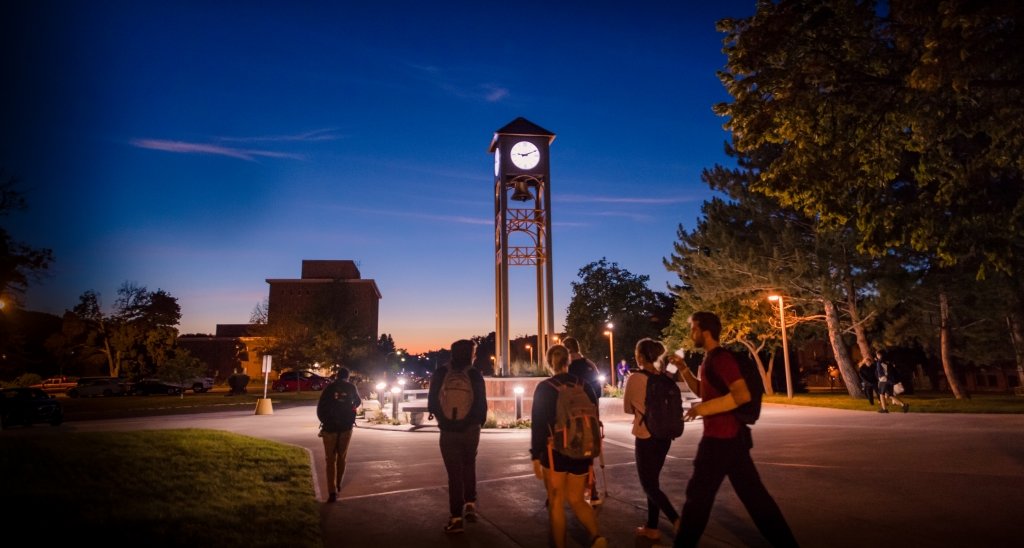Electrical Engineer Turns Particle Physics into Art

Particle accelerators are massive structures, used to find the tiniest details of our universe. Scientists around the world flock to these facilities to try out theories, hunt for particles and seek to understand a fully unified theory of physics.
“The Tevatron was a proton-antiproton collider and the highest energy accelerator in the world until the LHC(Large Hadron Collider) at CERN (the European organization for nuclear research) came on,” says Todd Johnson, a Michigan Tech graduate and special projects specialist at Fermilab in Batavia, IL. “It was also the first superconducting synchrotron (a type of particle accelerator) and the largest application of superconducting technology in the world at the time. My position involved failure analysis and prevention, designing and building custom instrumentation where needed, many late night call-ins to deal with interesting problems and training the accelerator operators on Tevatron systems.”
Johnson’s work goes beyond the science at this facility, though. Fusing science and creativity, he crafts art from the energy of the Tevatron.
“I've been interested in various forms of art for a long time, particularly as art relates to science,” he says. “Fermilab's founding director, Robert Wilson, was also a sculptor, and a lot of the architecture here shows that influence. My first serious foray into this field was in the early 1990s, when I began making white-light holograms.”
A few years into his tenure in Batavia, Johnson met some like-minded scientist-artists. “Around 2005 I met Bert Hickman, a retired engineer from Lucent who was very much into high voltage hobbies,” Johnson explains. “He, along with a couple other associates, had been developing a recipe to make Lichtenberg Figures (sculptures making use of branching electric discharges) in acrylic plastic, using a particle accelerator (a technique going back to the 1940's, actually). I volunteered to assist on one of their production runs in 2007 and was immediately fascinated by the process and the possibilities for pushing the technique fuarther.
Johnson has been working on his own pieces since then. “We only get to do this at most two days a year, so there is a lot of careful planning involved, and the progress in techniques is fairly slow, but we're now doing things no one has ever done before with this medium,” he says.
Johnson received his BSEE from Tech in 1982.
In addition to his creative flair, Johnson has also been instrumental in the final stages of operation of the Tevatron at Fermilab. This particle accelerator was the largest in the world until the Large Hadron Collider came online. It has since been deactivated due to a lack of funding.
“My final special project for the Tevatron was to construct the giant ceremonial buttons that were used to turn the machine off for the last time in a worldwide webcast event on September 30, 2011,” Johnson recalls. “It was a simple project but one which had a lot of emotion tied up in it since I had spent my career keeping the machine running, and here I had to get it ready to ‘pull the plug.’”
The Tevatron was turned off after nearly 30 years of operation. Since then, Johnson has been working on several projects, including a large laser system for the Advanced Superconducting Test Accelerator at Fermilab.
He was recognized by Fermilab with a 2012 Exceptional Performance Recognition Award for “abort(ing) the beam and dump(ing) the ramp [j1] ,” according to Fermilab Today. Simply put, this is a tribute to his work on the final shutdown of the Tevatron, powering down the particle accelerator for good.
While his connection with Fermilab goes back decades, Johnson’s ties to Michigan Tech extend even further back. “My connection to Michigan Tech goes back to my early childhood, when my parents and I would go on vacations to the Keweenaw quite frequently,” he says. “I have an old copy of the Daily Mining Gazette that has a photo of my mother carrying me (at age 3 or so) around in the Seaman Mineral Museum back when it was in Hotchkiss Hall in the 1960s. It was therefore a natural choice for me to go to Tech. I really enjoyed the atmosphere of the small campus, and of course the ready access to the beautiful and rugged surroundings. My time there not only left me with a great education, but many friends who are still very close to this day.”
See Johnson's work at shockfossils.deviantart.com
Michigan Technological University is a public research university founded in 1885 in Houghton, Michigan, and is home to nearly 7,500 students from more than 60 countries around the world. Consistently ranked among the best universities in the country for return on investment, Michigan’s flagship technological university offers more than 120 undergraduate and graduate degree programs in science and technology, engineering, computing, forestry, business, health professions, humanities, mathematics, social sciences, and the arts. The rural campus is situated just miles from Lake Superior in Michigan's Upper Peninsula, offering year-round opportunities for outdoor adventure.




Comments